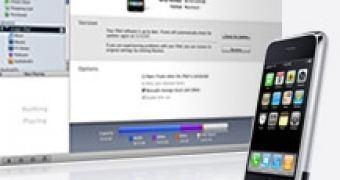Despite having just launched the service and issued an iTunes update to put an end to the workarounds that lets users use any music file as a ringtone, users keep coming up with ways to bypass Apple's service.
Ever since the price cut, Apple has been selling three times as many iPhones and the sales figures were solid to begin with. All in all that's a lot of iPhones and they all need ringtones to appease their users. Unfortunately, while Apple service is better than the rest in many respects, it is still not all that compelling, especially when considering that simple workarounds such as renaming files get rid of many of the limitations that users feel are unfair. Ringtones are a serious business and there can be little doubt that both Apple and the labels want the iTunes Ringtone service to succeed, but before that can happen, Apple needs to get its act together.
The renaming workaround was embarrassing enough as it was and the update and subsequent workaround only made the company look even more ridiculous. Now, users have upped the game, by discovering exactly what makes a ringtone. TUAW reports that hacker Cleverboy, aka Dudley, has taken a good look at the ringtone files and found out exactly what makes them tick. It would seem that an atom in the m4a metadata that identifies the file's role is all that is needed to make iTunes see a ringtone. Using applications such as AtomicParsley all one has to do is set the metadata string 'stik' to a value of 14 and any AAC file automatically becomes a ringtone. ITunes automatically adds the resulting 'ringtone' to the adequate list and syncs it to an iPhone without a second thought. Apple's handling of the ringtones and the ease with which one can bypass the entire iTunes system is amazing. The company really needs to give this some serious work to put an end to these workarounds and regain some of that lost credibility.

 14 DAY TRIAL //
14 DAY TRIAL //